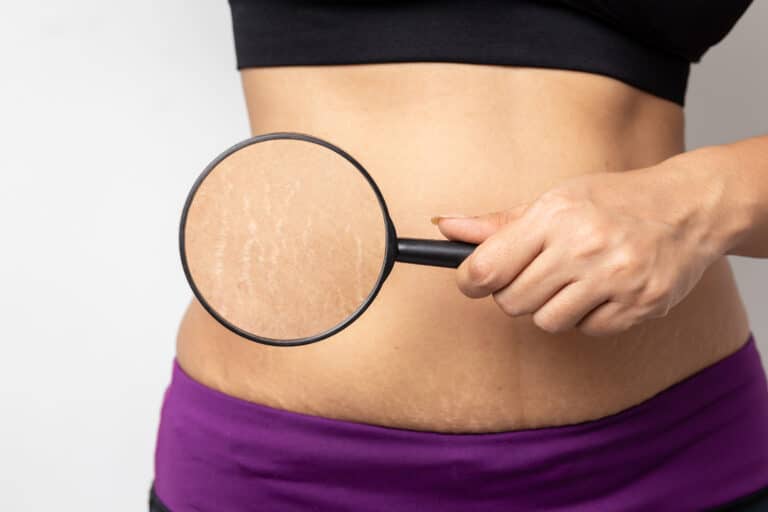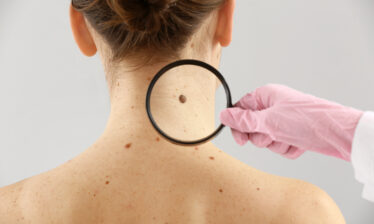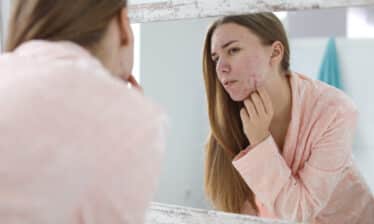You’ve probably noticed them — those pesky lines that seem to appear out of nowhere on your skin. So, what are stretch marks? Also known as striae, stretch marks are narrow, indented streaks or lines that develop on the surface of the skin when it is stretched beyond its capacity to recoil. They can vary in size, length, and color and are commonly associated with various conditions.1
The good news is, you can learn how to get rid of stretch marks. Let’s take a look at how and learn more about this common condition.
A Closer Look at Stretch Marks
Stretch marks can be a source of insecurity for many, but understanding them is the first step toward treating them effectively.
The Signs of Stretch Marks
Recognizing the early signs of stretch marks can help you take timely action to possibly minimize their appearance or even prevent them altogether. Here’s what to look out for:2
- Reddish or purple lines
- A slightly indented or even ridged texture
- An itchy or tingling sensation in the area where they’re forming
What Causes Them
Understanding what causes stretch marks can help you get effective prevention and treatment. Various factors contribute to their development, including:3
- Hormonal changes
- Pregnancy
- Rapid weight gain or loss
- Genetics
- Muscle growth
- Medical conditions
- Medications like corticosteroids
- Exercise
- Genetic disorders like Marfan syndrome or Cushing syndrome
Who Gets Them
Stretch marks are not exclusive to any particular group or gender. They can affect anyone. That said, they are more commonly seen in women, especially during significant life phases like puberty, pregnancy, and menopause. In fact, between 50% and 90% of women have them.4
You may also notice stretch marks increase as you age because the skin loses collagen and elasticity.5
How to Get Rid of Stretch Marks
Choosing the right stretch marks treatment isn’t a one-size-fits-all solution. You must consider several factors, including:6
- Your individual case
- Skin type
- Lifestyle factors
- Budget
- Convenience
- Your desired outcome
Understanding these variables will help you make an informed decision tailored to your unique needs.
Retinoid Cream
Derived from vitamin A, retinoids promote collagen production to improve the skin’s elasticity and texture and reduce the appearance of stretch marks.
Laser Therapies
Laser therapies use focused light energy to stimulate the skin’s natural healing process, encouraging collagen and elastin production. Different types of lasers target various skin areas so they can treat old and new stretch marks. The procedure is generally safe but may require multiple sessions for optimal results.
Microneedling
Microneedling is a minimally invasive procedure that involves using a device with fine needles to create tiny punctures in the skin. The controlled injury triggers the body’s natural healing response, which triggers collagen and elastin production. As the skin heals, the appearance of stretch marks can diminish significantly.
Learn More About Body Treatments
Stretch marks are a common concern, but they’re far from untreatable. Understanding your options can transform your journey to smoother, more radiant skin. If you want more information about improving your skin, learn more about cosmetic procedures and body enhancement techniques with My Body Treatment.
SOURCES:
- Mayo Clinic: “Stretch marks.”
- WebMD: “Stretch Marks: Causes and Treatment.”
- Mayo Clinic: “Stretch marks.”
- WebMD: “Stretch Marks: Causes and Treatment.”
- Medical News Today: “How do I get rid of stretch marks?“
- Mayo Clinic: “Stretch marks.”






